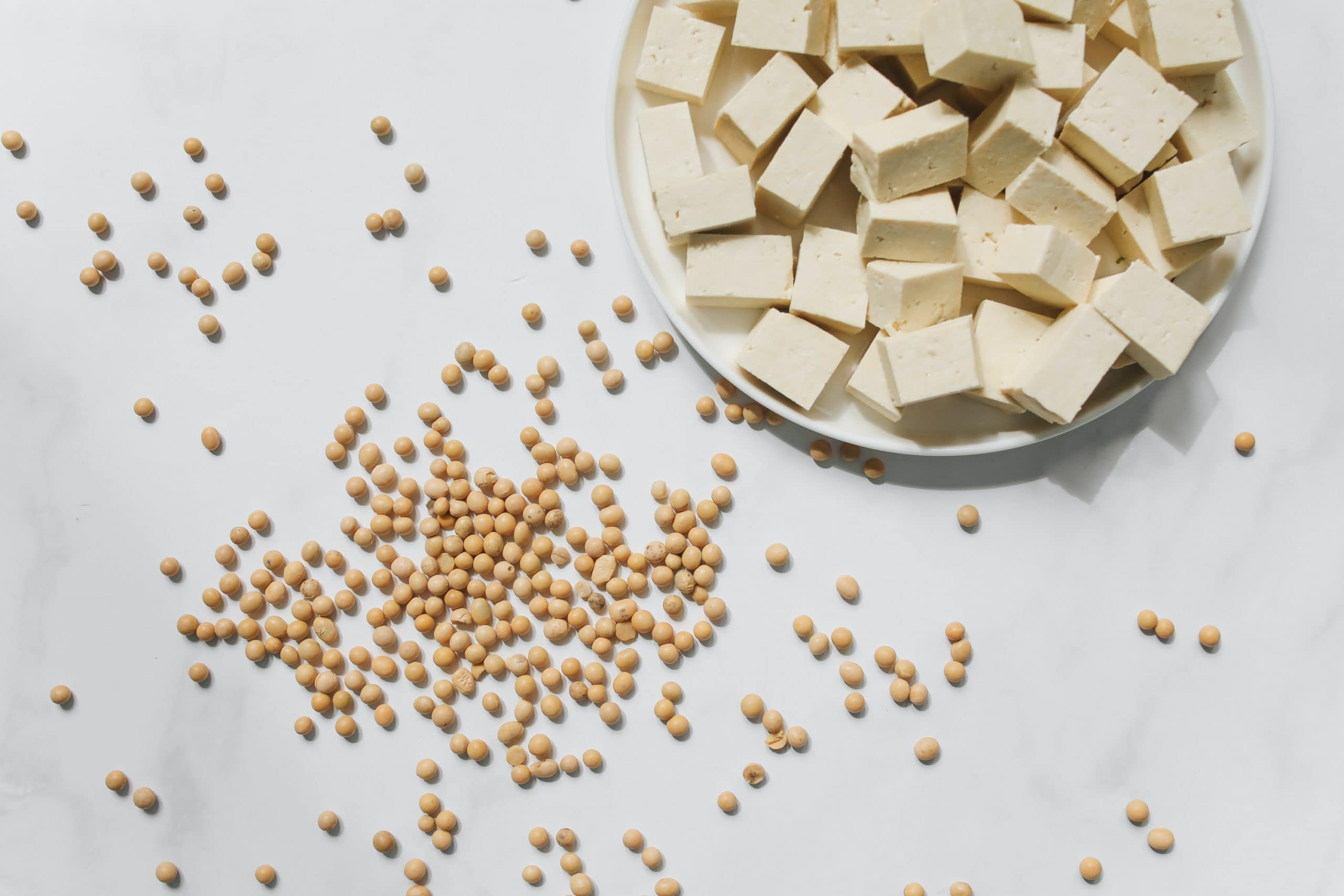
Tofu lovers appreciate it for its neutral flavor and variety of textures from silky and creamy to quite crumbly. This makes tofu a versatile base for many dishes and desserts, as well as an interesting addition.
Tofu is a vegetable curd made from fermented soy milk from high-protein soybean varieties. Unfortunately it is still mistrusted by many people. Wrongly so.
You need to start by obtaining the milk. Soybeans should be washed and left to soak overnight. The next day swollen grains should be ground and water added in appropriate proportions selected on the basis of the properties of a particular variety of soybeans. A white, apparently milky porridge is formed, which should be boiled and cooked for another 10 minutes. The mixture is then strained to produce two products: soy milk and okara, or edible soybean pulp.
A coagulating agent – citric acid, calcium or magnesium sulfate – is added to the milk and heat-treated. After several hours, the soy protein separates from the whey, which must be drained. The resulting lumps are pressed like regular cottage cheese. To give tofu a unique flavor, various spices can be added to it.
Depending on the protein saturation, tofu can be soft and silky, ideal for salads and soups, or firm, best for frying. There is also a special fermented type that is easy to digest.
Tofu is not as rich a source of protein as chicken meat, for example, but it is a low-fat product. 100 g of hard tofu contains 10 g of protein (soft – 5 g) and only 4 g of fat. At the same time, it is a good vegetable fat that does not raise cholesterol levels. Besides, tofu contains a lot of calcium and manganese, as well as selenium, phosphorus, copper, iron, magnesium and omega-6 fatty acids.
Soy protein can cause allergies, so allergy sufferers need to be especially careful. Eating large amounts of tofu can be very bad for digestion and cause intestinal irritation due to the presence of substances such as phytic acid salts, saponins and lectins. Soy protein is also not recommended for people suffering from autoimmune diseases. Adults are recommended to consume 50-80 g of tofu per day, and children – up to 35 g.
There are many ways to prepare tofu. It can be fried, grilled, stewed, steamed and eaten raw. It goes well with vegetables, meat, fish and seafood, as well as in desserts. You can add it to salads and soups, make it into pate, cheesecake, and even smoothies.
Tofu is one of the easiest foods to cook. However, it is worth knowing a few tricks:
Main photo: Polina Tankilevitch/pexels.com